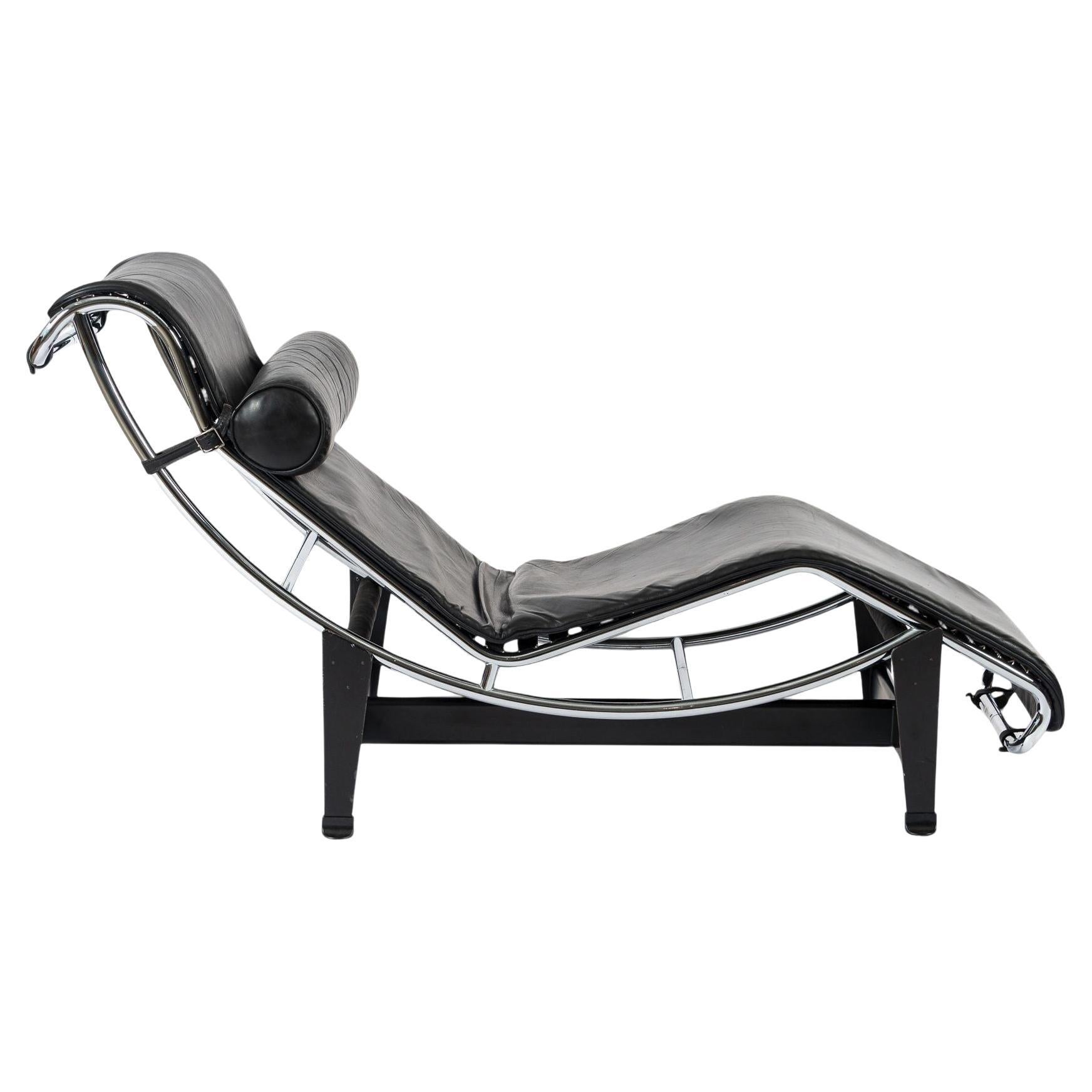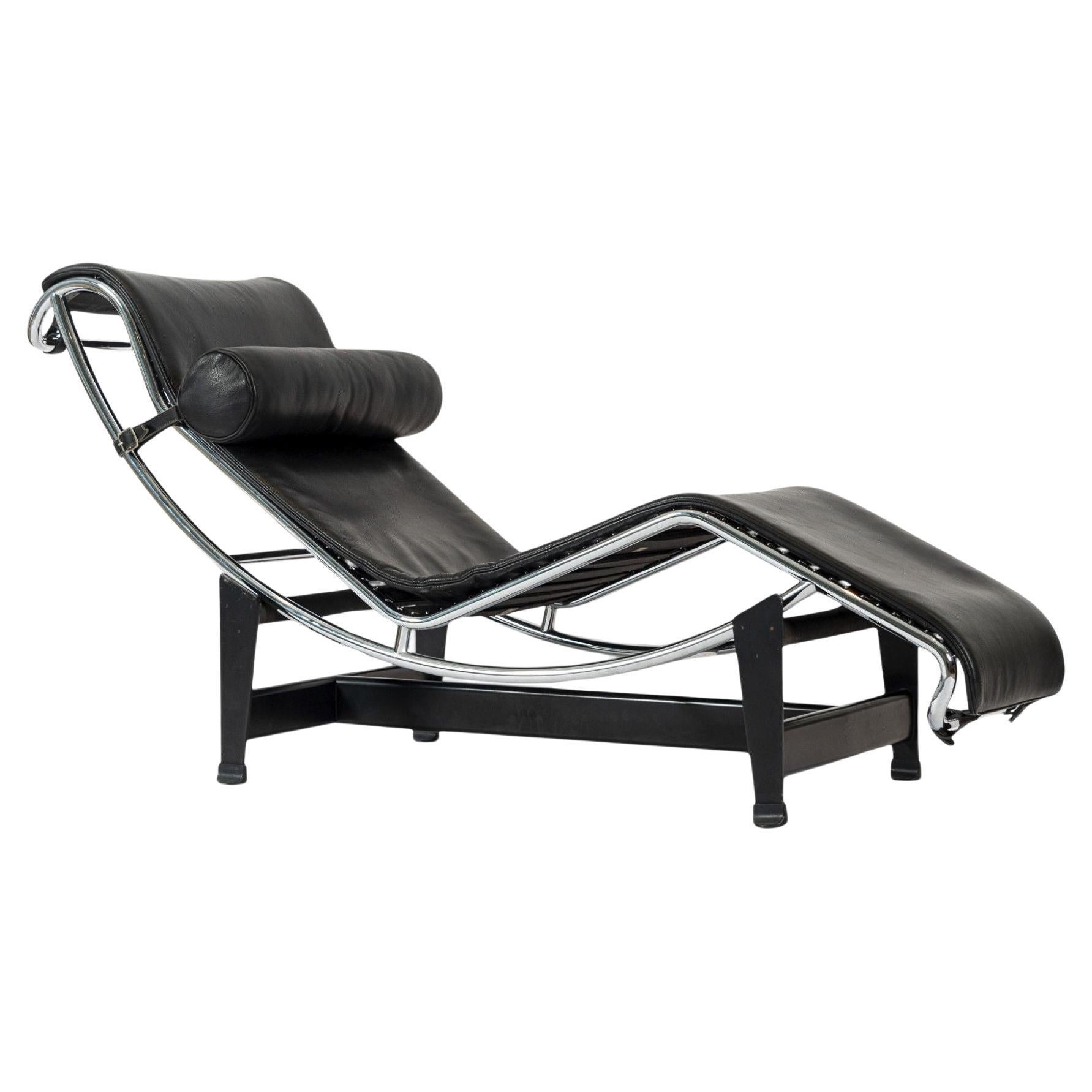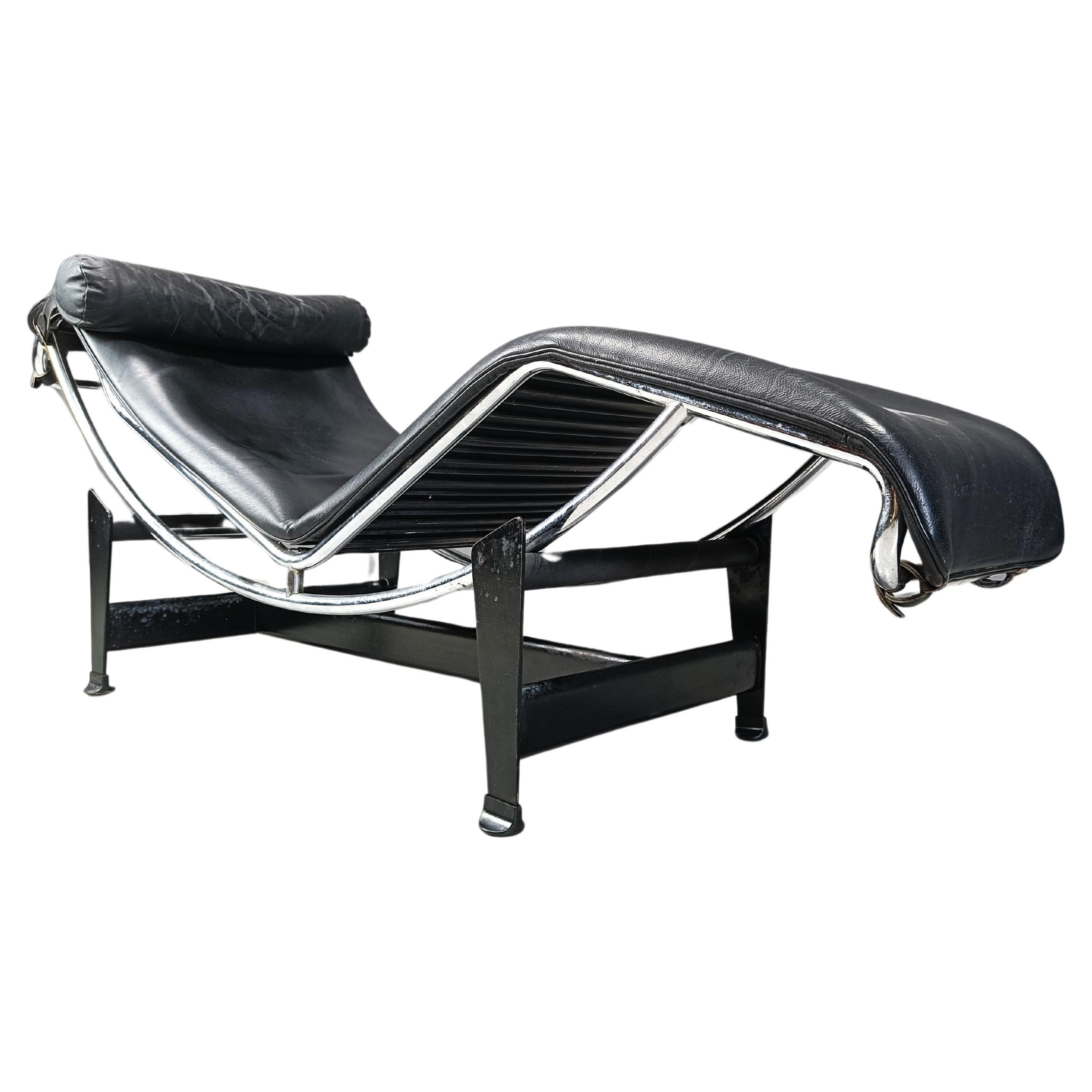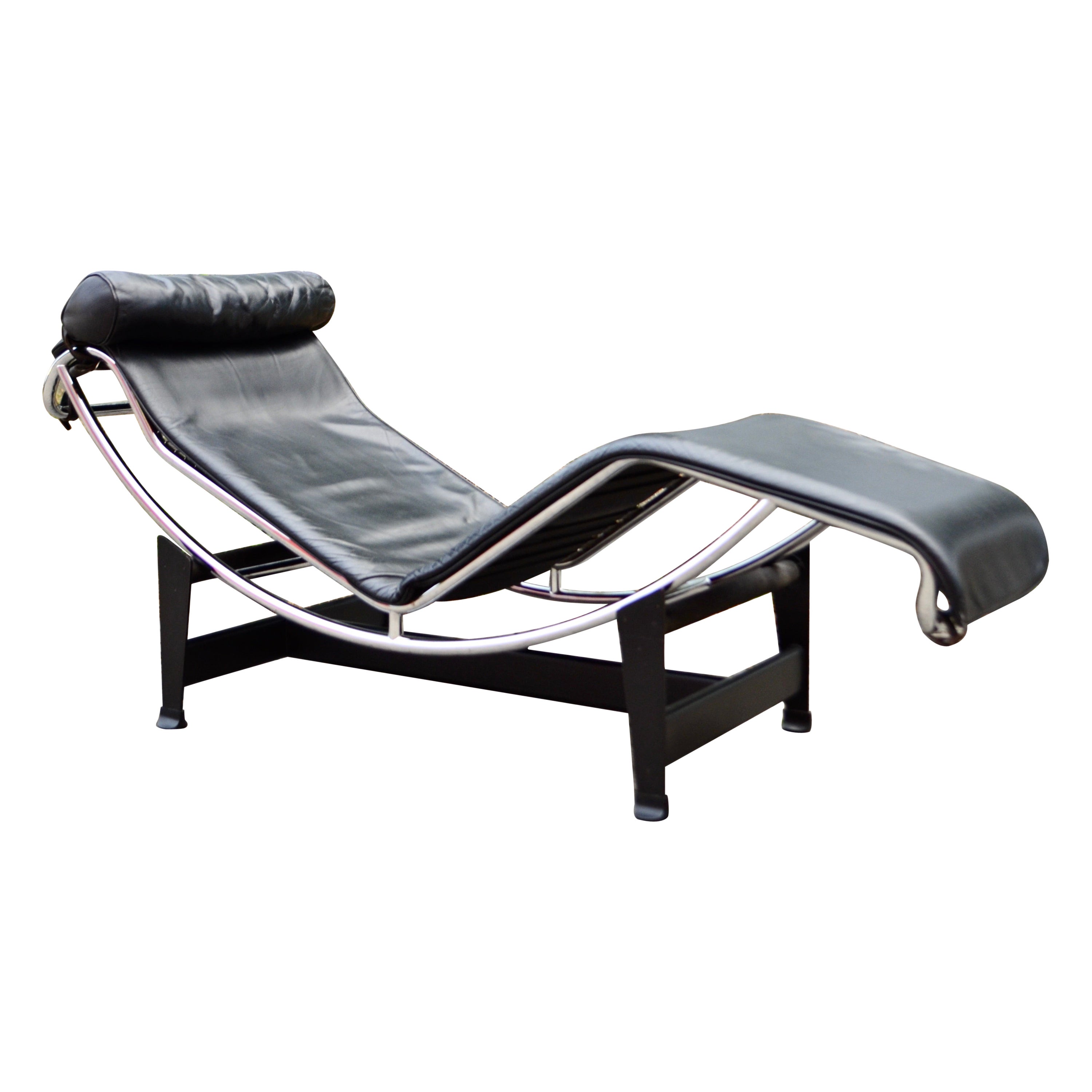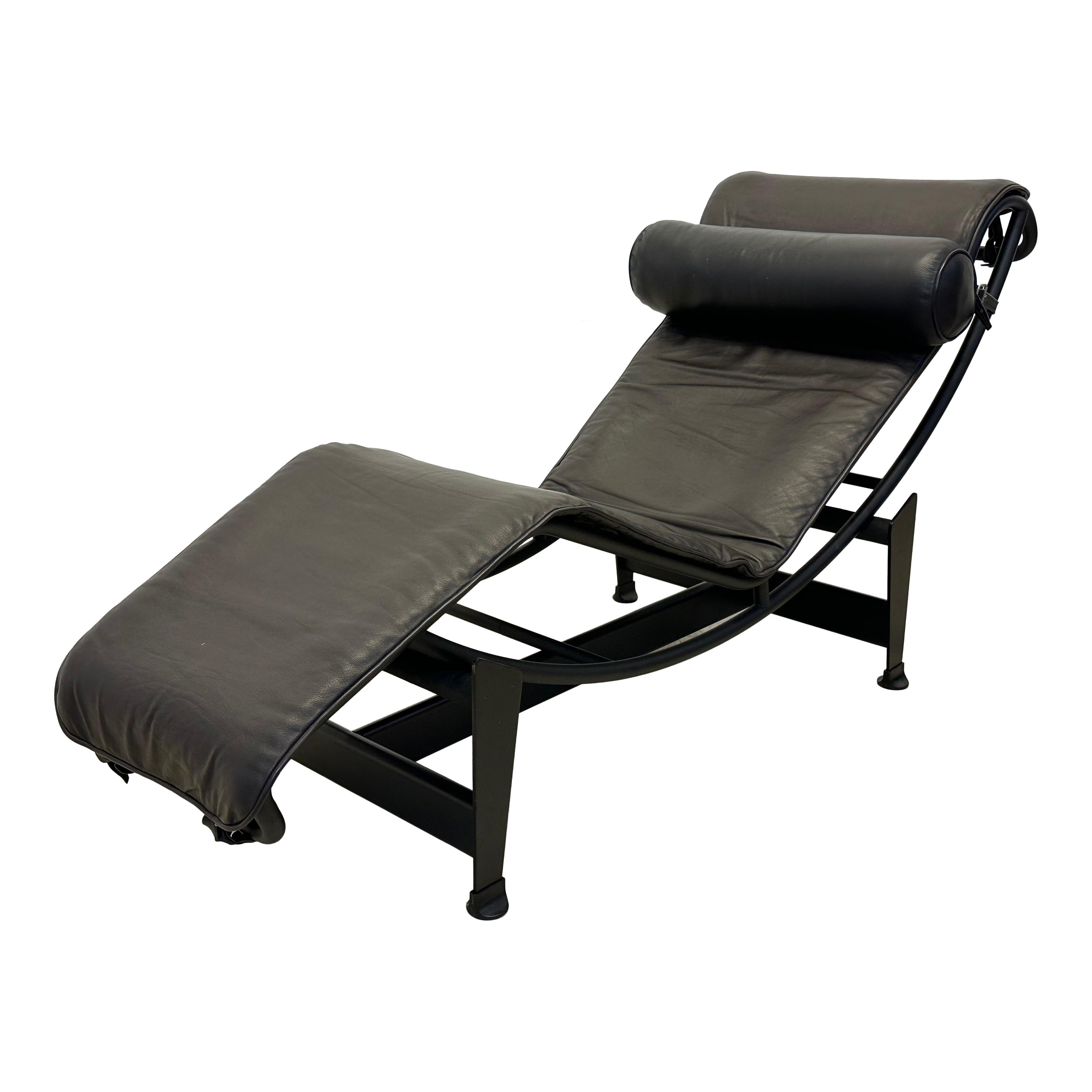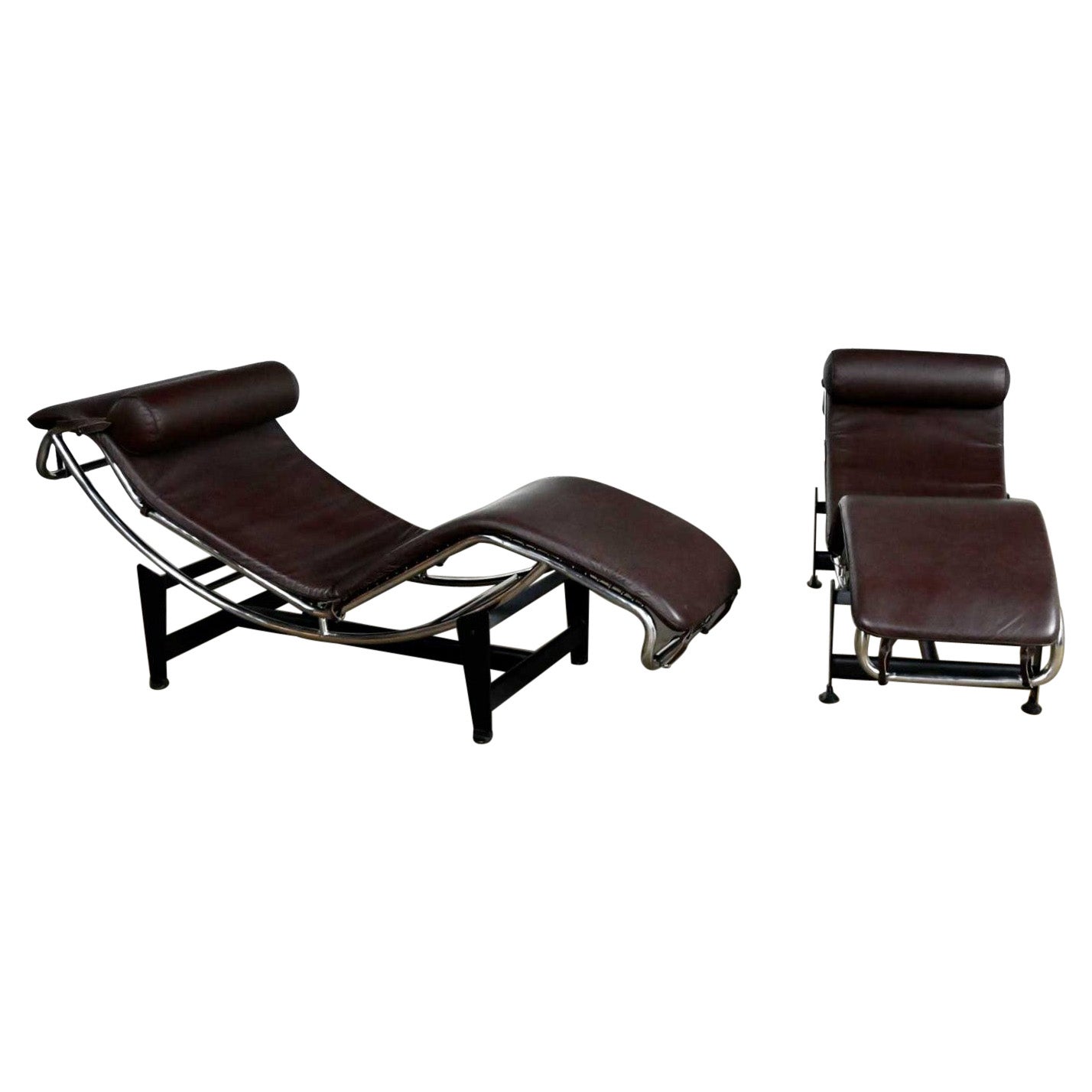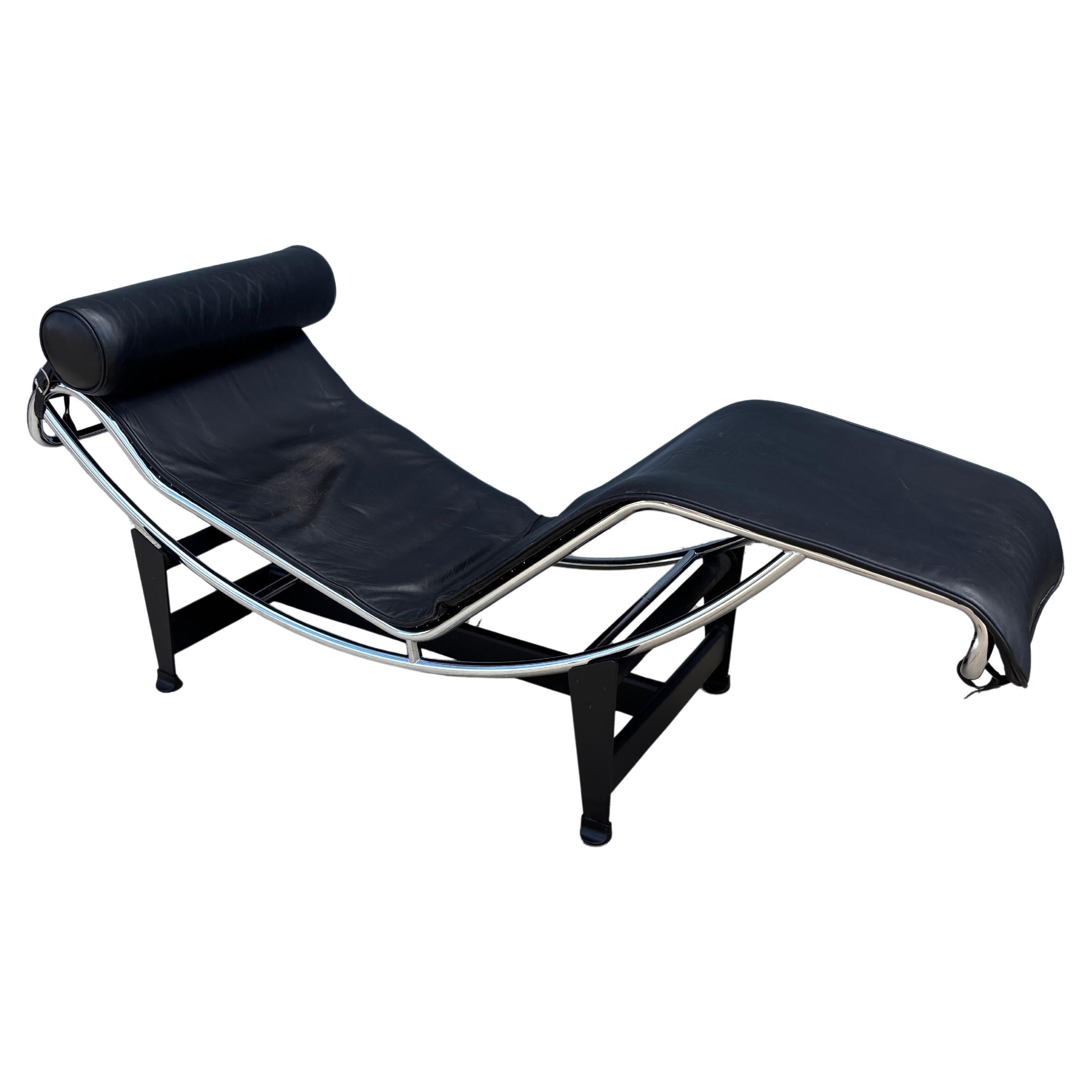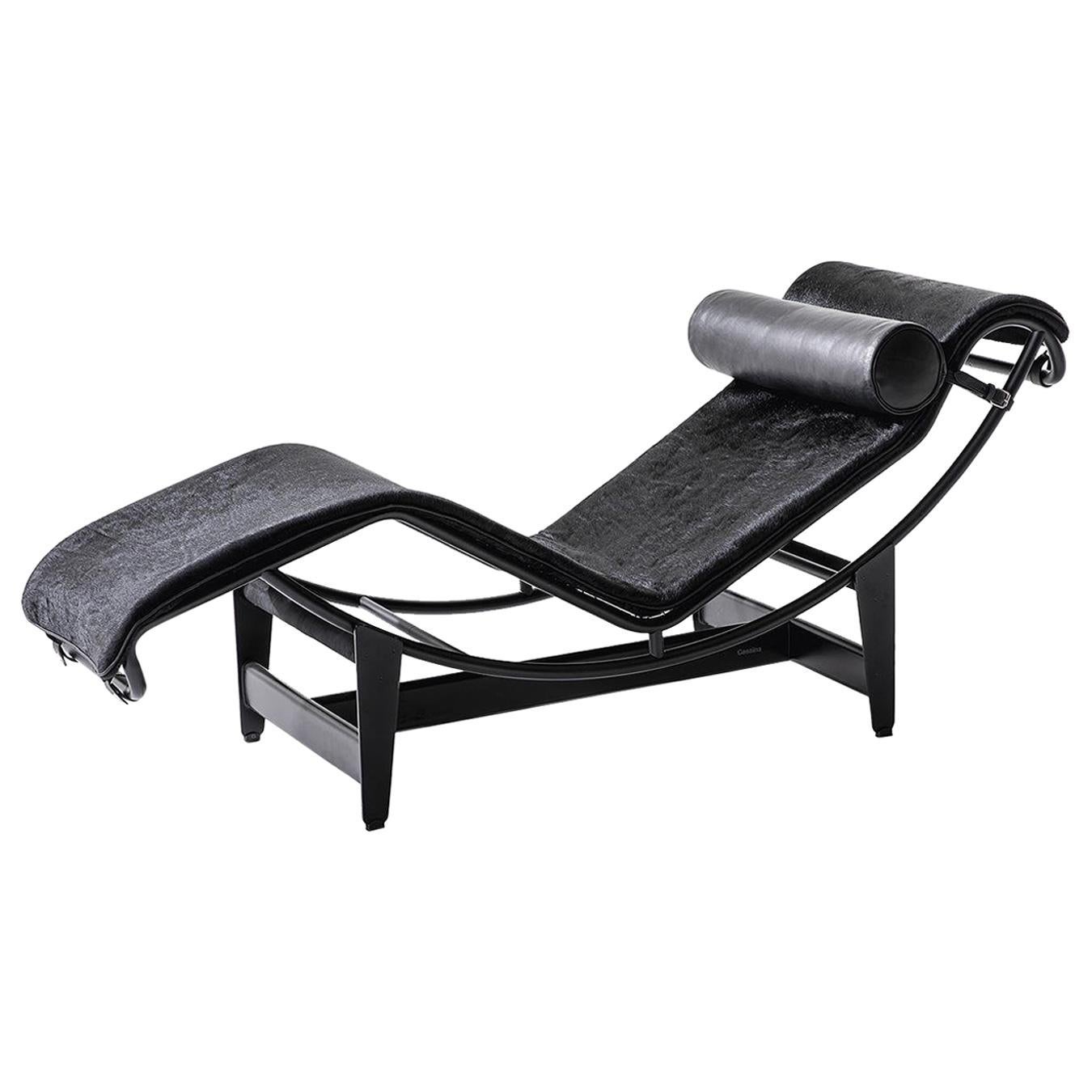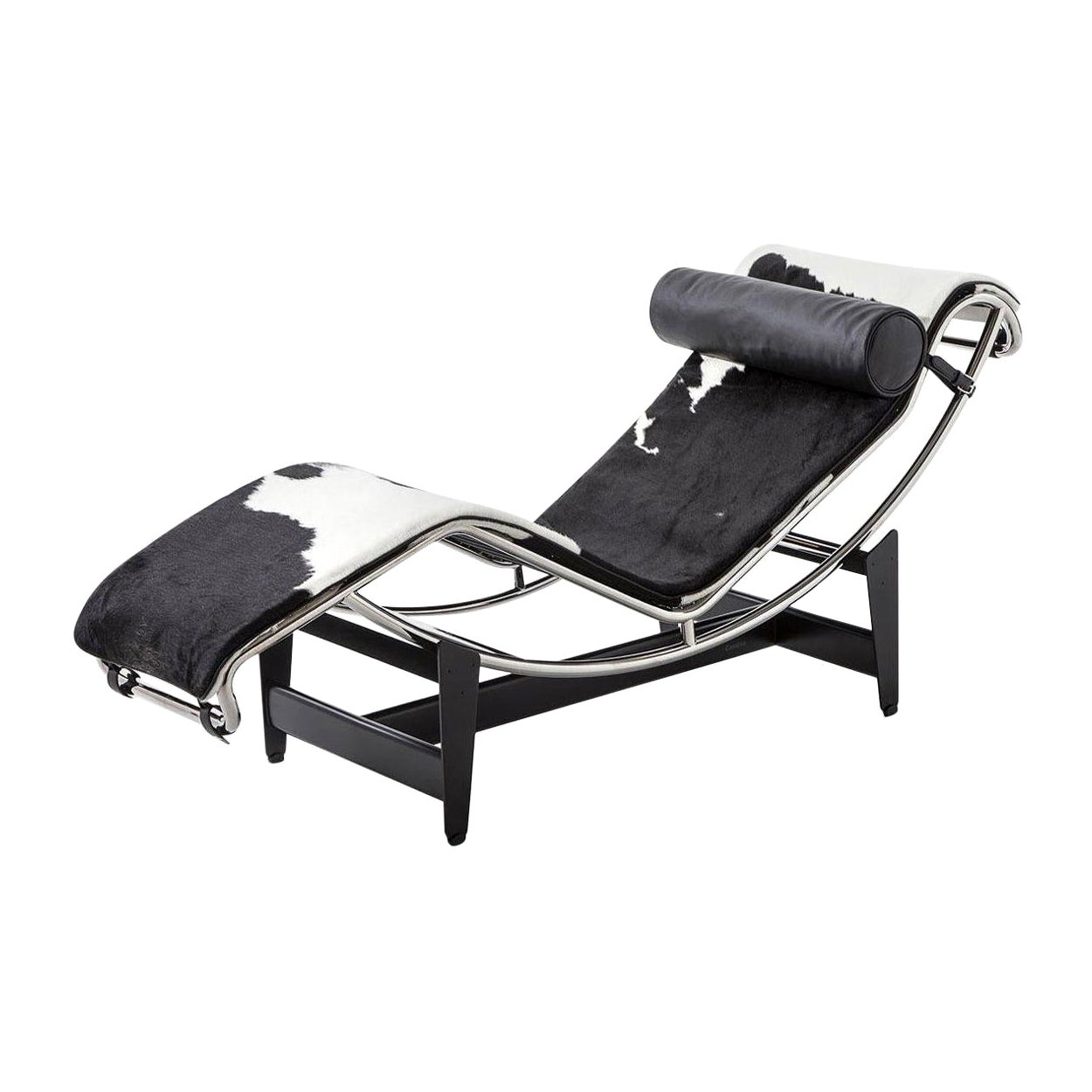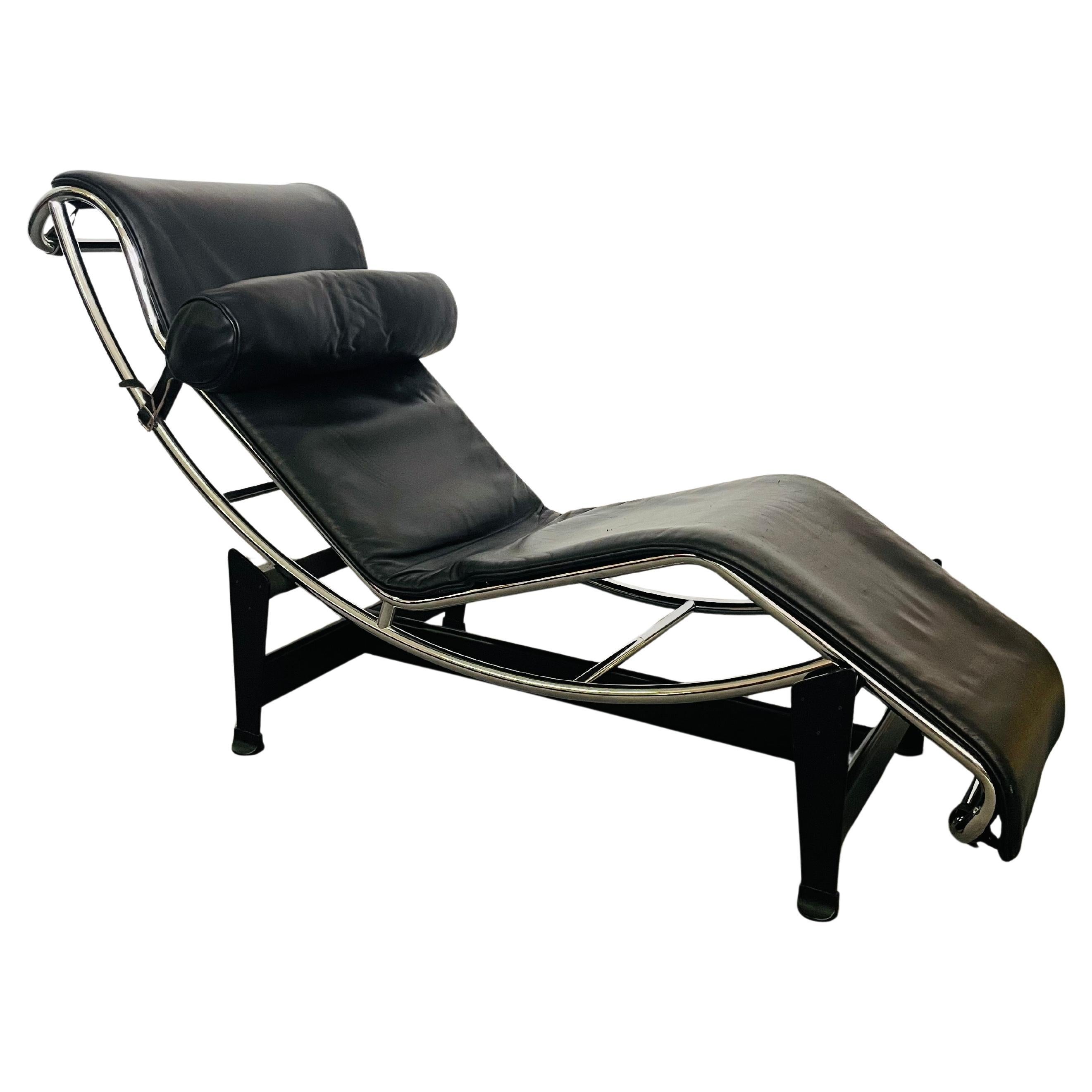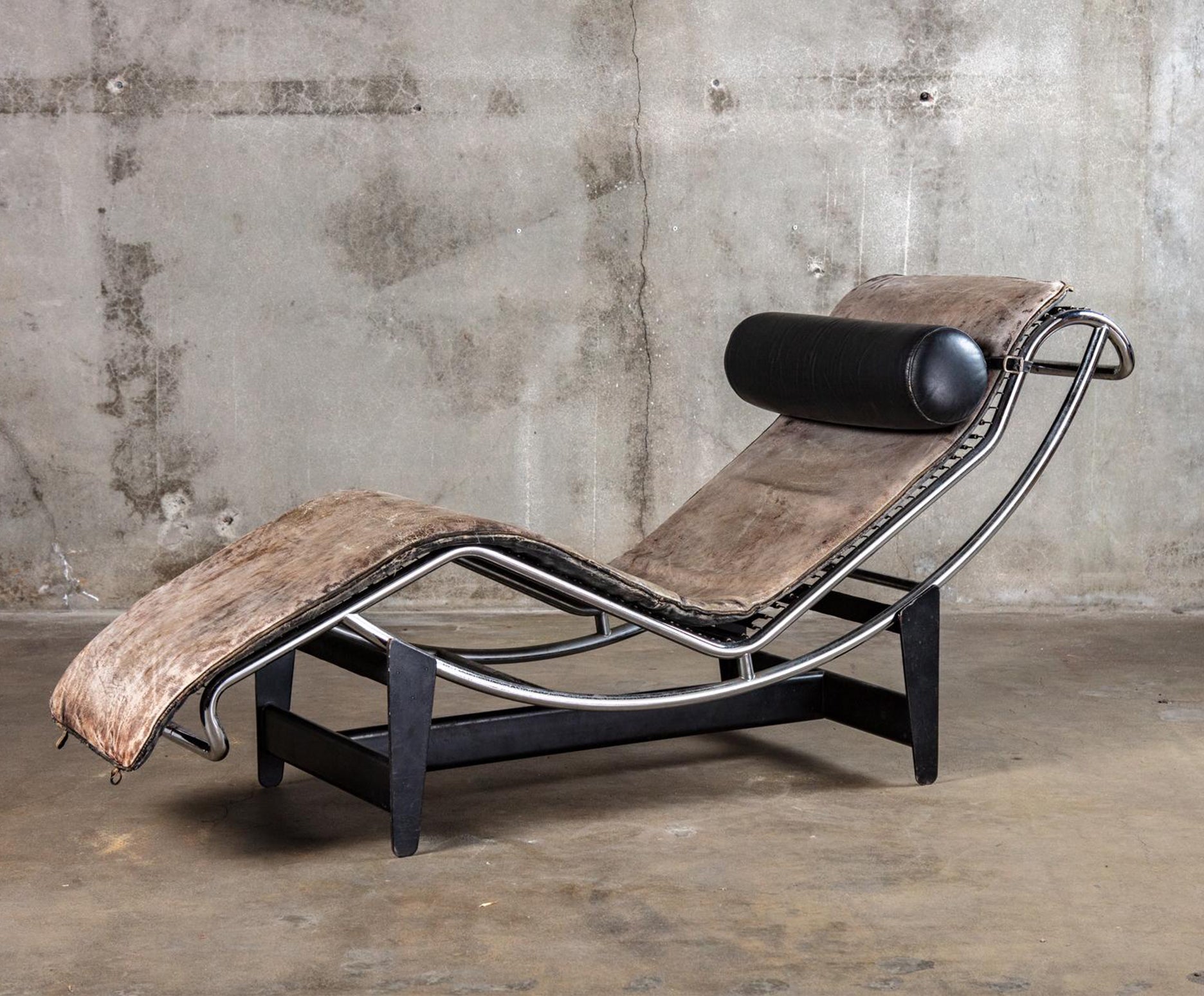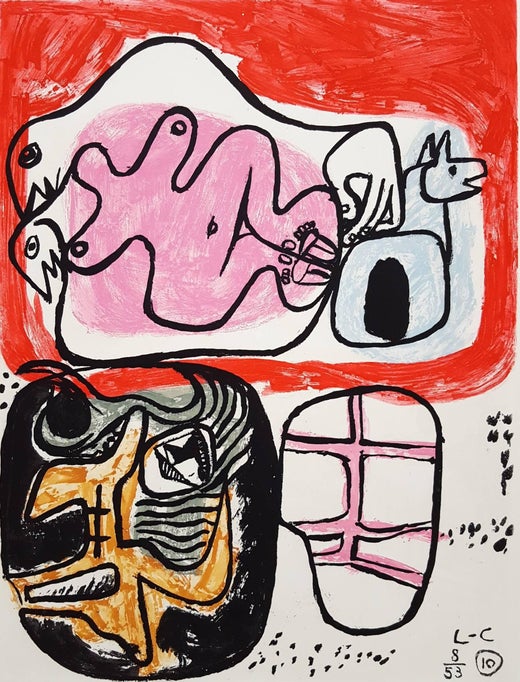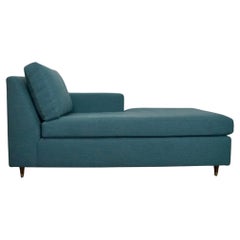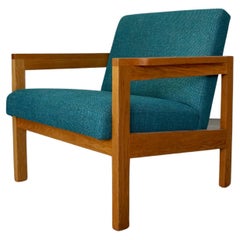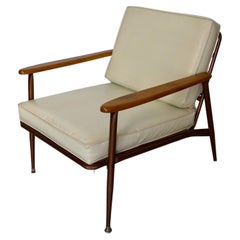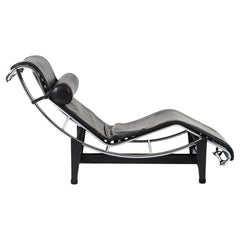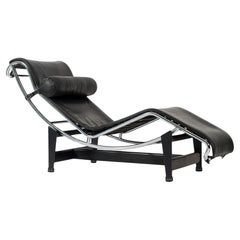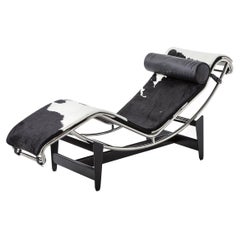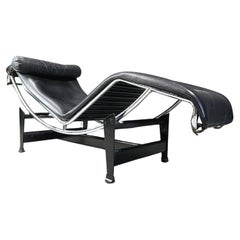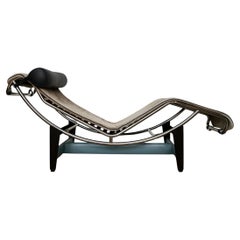
Original Le Corbusier LC4 Chaise Lounge Chair
View Similar Items
Original Le Corbusier LC4 Chaise Lounge Chair
About the Item
- Creator:Le Corbusier (Designer),Cassina (Manufacturer),Le Corbusier, Pierre Jeanneret, Charlotte Perriand Cassina (Designer)
- Design:
- Dimensions:Height: 33.5 in (85.09 cm)Width: 64 in (162.56 cm)Depth: 22 in (55.88 cm)Seat Height: 17.5 in (44.45 cm)
- Style:Bauhaus (Of the Period)
- Materials and Techniques:
- Place of Origin:
- Period:
- Date of Manufacture:2000's
- Condition:Wear consistent with age and use. Both base and chaise lounge chair are in excellent original condition.
- Seller Location:Burbank, CA
- Reference Number:1stDibs: LU7064244835742
LC4 Chaise Longue
Charles-Édouard Jeanneret, the Swiss-born designer and architect known as Le Corbusier (1887–1965), famously described the houses he designed as machines to live in. It is only fitting then that he would furnish each home with its own machines built to meet specific needs. Designed in 1928, the LC4 chaise longue is a “relaxing machine,” according to Le Corbusier, its curves mimicking those of a lounging body. Part of his first-ever collection of furniture, made in collaboration with designer Charlotte Perriand (1903–99) and his cousin Pierre Jeanneret (1896–1967), the LC4 is an ode to the principles of modernism: rejection of ornament and the prioritization of functionality.
Le Corbusier believed that furniture should be an extension of our limbs and that it should adapt to our functions. In reflecting his sketches of the various positions of the lounging human body, the LC4 chaise longue features a fully movable frame that adjusts at the base, allowing the user to set it upright or fully reclined. The curved tubular steel base echoes the material exploration taking place at the beginning of the 20th century, in which designers experimented with the flexibility of steel, plastics and molded plywood. But the upholstery was cowhide or leather, the softness of which starkly contrasts with the industrial steel and angular shape. The LC4 has a sculptural presence in any given room, which is perhaps a result of Le Corbusier having dispensed with the metric system and instead drawing on his own system of proportion based on the “ideal” male body.
Furniture designed by Le Corbusier in collaboration with Pierre Jeanneret and Charlotte Perriand — a gifted innovator who was initially dismissed by the French architect but was later tasked with creating furniture and interiors — was originally produced by Austrian manufacturer Thonet. But in 1964, the Italian furniture company Cassina acquired the production and sales rights to the LC4 chaise longue, and the LC collection, as it was christened, has been in production there ever since. The collection originally included 19 pieces, each titled in the same alphanumerical style — LC1, LC2, LC3 and so on — that encapsulated a full range of furniture, from armchairs to dining tables.
The LC4 remains the definitive chaise longue of the 20th century, its position secured by its unusual form and its representation of functionality and modernism. With the LC4, Le Corbusier also confronted the inconceivable challenge of making an object built like a machine feel inviting and comfortable.
Le Corbusier
Swiss-born Charles-Édouard Jeanneret, best known by his adopted name Le Corbusier, was a highly influential architect, designer, painter, urban planner and writer whose career spanned almost five decades. His designs for sofas, chairs and other furniture are spare, minimal and efficient but at the same time offer supreme comfort.
A pioneer of progress-minded modern architecture, Le Corbusier sought to impose a rational order on the chaos of the world through design. He rejected the excessive architectural ornament and developed a style that became known as brutalism, creating buildings with elemental geometric forms that were made of industrial materials such as steel and reinforced concrete.
Le Corbusier believed that pure, well-designed spaces could offer a lesson in how little is needed to achieve happiness. To convey this notion, the architect prioritized modern, open interiors and emphasized light, rational designs. His architecture and interiors share a clear sense of space and structural order, underlining the beauty in harmony, proportion and simplicity.
Le Corbusier’s furniture espouses these same ideals. Collaborating with his cousin, Pierre Jeanneret, and trailblazing designer Charlotte Perriand, he devised such iconic pieces as the LC2 Petit Confort armchair and the LC4 chaise longue. Each couples a tubular chrome frame with soft, supple leather upholstery, lending an organic warmth to an industrially made design. In his furniture, Le Corbusier broke new ground in ergonomics.
The shape of the LC4 chaise is taken directly from the human form; the classic cowhide upholstery makes the sitter feel weightless; and the piece features an adjustable positioning mechanism to promote total relaxation. Bereft of ornament and prized for its functionality, the LC series created by Le Corbusier, Perriand, and Pierre is currently manufactured by Cassina.
Such planning and intelligence were the hallmarks of Le Corbusier’s career. Whether in his designs for private residences such as the Villa Savoye near Paris, apartment towers like the Unité D'habitation in Marseilles, or in his furniture, he worked toward a style of living that was expansive and flexible. The strength and simplicity of line of Le Corbusier’s sofas, chaise longues and other seating pieces give them a sculptural presence in any décor, yet they are sublimely restful. And as you will see on 1stDibs, Le Corbusier’s furniture reflects a worldly taste: it is at once refined, cosmopolitan and chic.
Find a collection of vintage Le Corbusier furniture for sale on 1stDibs.
More From This Seller
View AllVintage 1970s American Mid-Century Modern Chaise Longues
Brass
Vintage 1960s American Hollywood Regency Slipper Chairs
Fabric, Wood
Vintage 1960s American Mid-Century Modern Lounge Chairs
Fabric, Oak
Vintage 1950s American Mid-Century Modern Lounge Chairs
Metal
Vintage 1930s American Spanish Colonial Lounge Chairs
Fabric, Wood
Vintage 1950s American Mid-Century Modern Lounge Chairs
Fabric, Wood
You May Also Like
1990s Italian Bauhaus Chaise Longues
Steel, Chrome
Early 2000s Italian Bauhaus Chaise Longues
Steel, Chrome
2010s Italian Mid-Century Modern Chaise Longues
Metal
Vintage 1970s Italian Bauhaus Chaise Longues
Chrome
20th Century Italian Bauhaus Chaise Longues
Chrome, Steel
Late 20th Century Italian Mid-Century Modern Chaise Longues
Steel
Recently Viewed
View AllRead More
The 21 Most Popular Mid-Century Modern Chairs
You know the designs, now get the stories about how they came to be.
Billy Cotton Layers His Interiors with Lived-In Comfort
The Brooklyn-based designer is adept at styles ranging from austere to over-the-top, espousing an architectural, detail-oriented approach also evident in his line of furniture and lighting.
